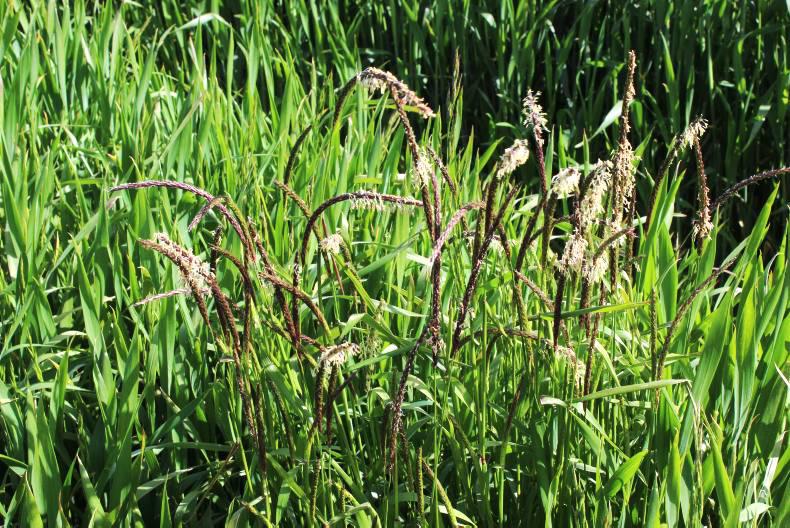Flowering weather: Flowering has begun in many winter wheat crops. It would be great if the muggy weather would pass in terms of fusarium risk, even if showers must continue. The recent humid weather has been problematic for both potato blight and ear blight. This is especially the case for wheat but it is also true for spring barley. Warm sunny weather speeds up flowering to shorten the infection period and reduce infection pressure. Aphids can quickly build on the ears of wheat so they need to be monitored where the T3 is being applied. Be slow to spray unless the problem gets bad because numbers can fall off naturally in unsprayed scenarios or rebound following insecticides. Recent heavy rain has caused some lodging and tossing in winter barley crops.
Final sprays: Most winter wheat crops are around the T3 (headed to flowering) fungicide stage. The recent warm weather has significantly accelerated crop development and an early harvest could be on the cards if temperatures remain high. Final sprays will be triazole mixtures like Prosaro, Gleam or Magnello. Chlorothalonil might also be included where septoria is bad. Inclusion of a strobilurin like Amistar is questionable but can help in stress conditions. Don’t wait for a spray interval if the crop is flowering. Apply the T2 fungicide to spring barley from booting to when the heads begin to appear. Later crops are still a bit away from this stage. Fungicide options include Bontima, Ceriax, Fandango and Siltra or triazole combinations with Treoris or a strobilurin. T2 treatments should include a contact for Ramularia. Early spring oat crops are booting with some ears breaking boot. Target final sprays on oats once the heads are out. This will be a triazole plus strobilurin, possibly with a morpholine if mildew is present. Where there is no mildew, epoxiconazole or Folicur at 0.7 l/ha, plus half rate Modem or Amistar will suffice. If mildew or crown rust are present use Amistar Pro or Jenton with the triazole.
Weeds surviving: Some crops have become quite dirty as wild oats, other grass weeds and broad-leaved weeds appear above the crop. If some weeds have been killed by the herbicide and others have survived you could have resistance and you need to get it checked out. If you only have a few survivors rogue them – it could save you a big problem in the future. This is especially important for wild oats where there is evidence of resistance. Blackgrass and other grasses should be treated with zero tolerance. Spray off plants and patches with Roundup. This may mean knapsack application but the alternative could mean the field cannot be used for cereals due to weed resistance. Where you have any grassweed problem get prepared for shallow cultivation of the stubbles post harvest to help decrease weed seed numbers over time.
Crows: The attack on winter barley crops has begun. Take the necessary precautions, especially along edges, fences and gates, under electricity cables, tramline ins and outs and lodged spots. Use thread, tape, kites, balloons etc. Bangers can also help but they need to be assisted by an occasional injection of lead.






 This is a subscriber-only article
This is a subscriber-only article










SHARING OPTIONS: